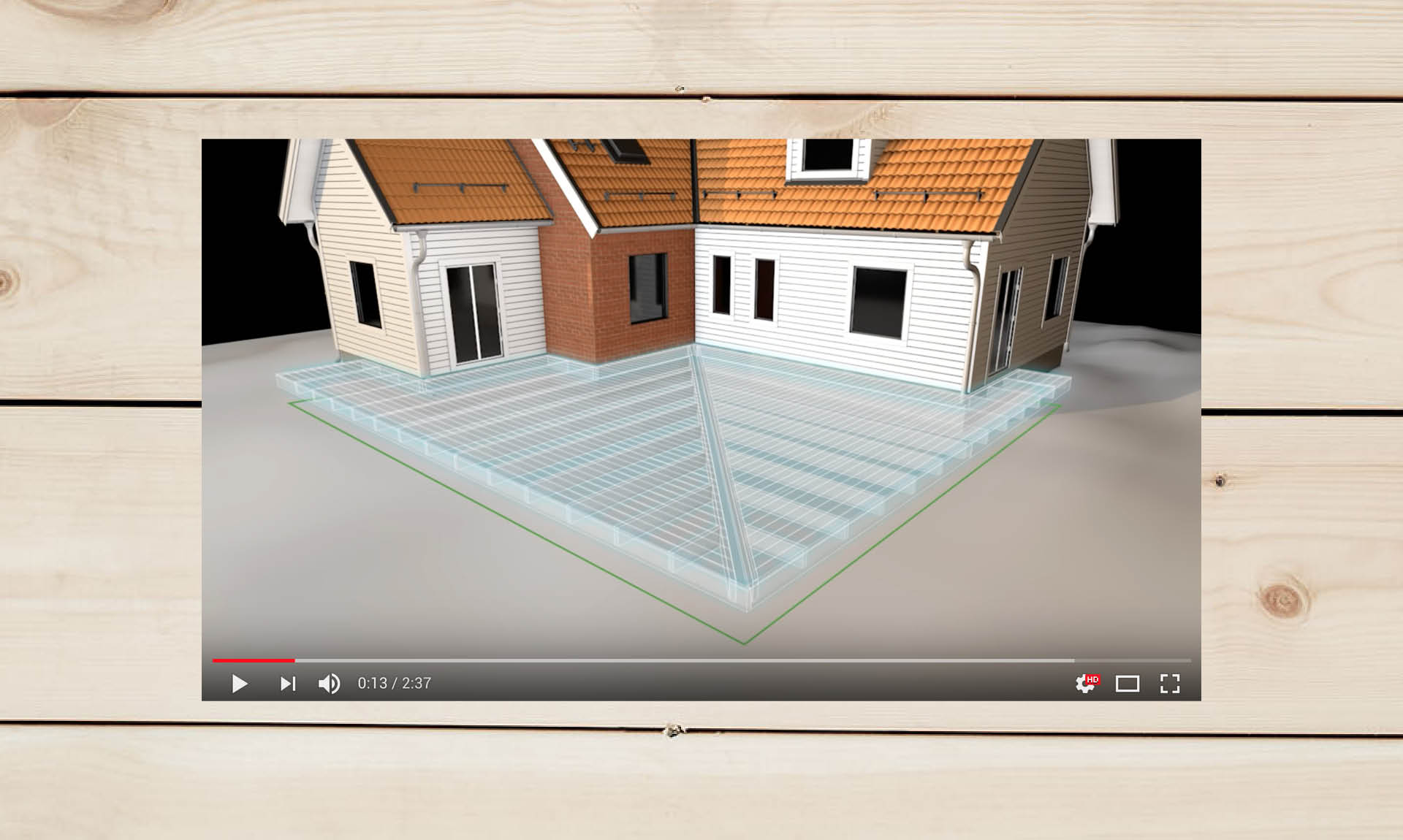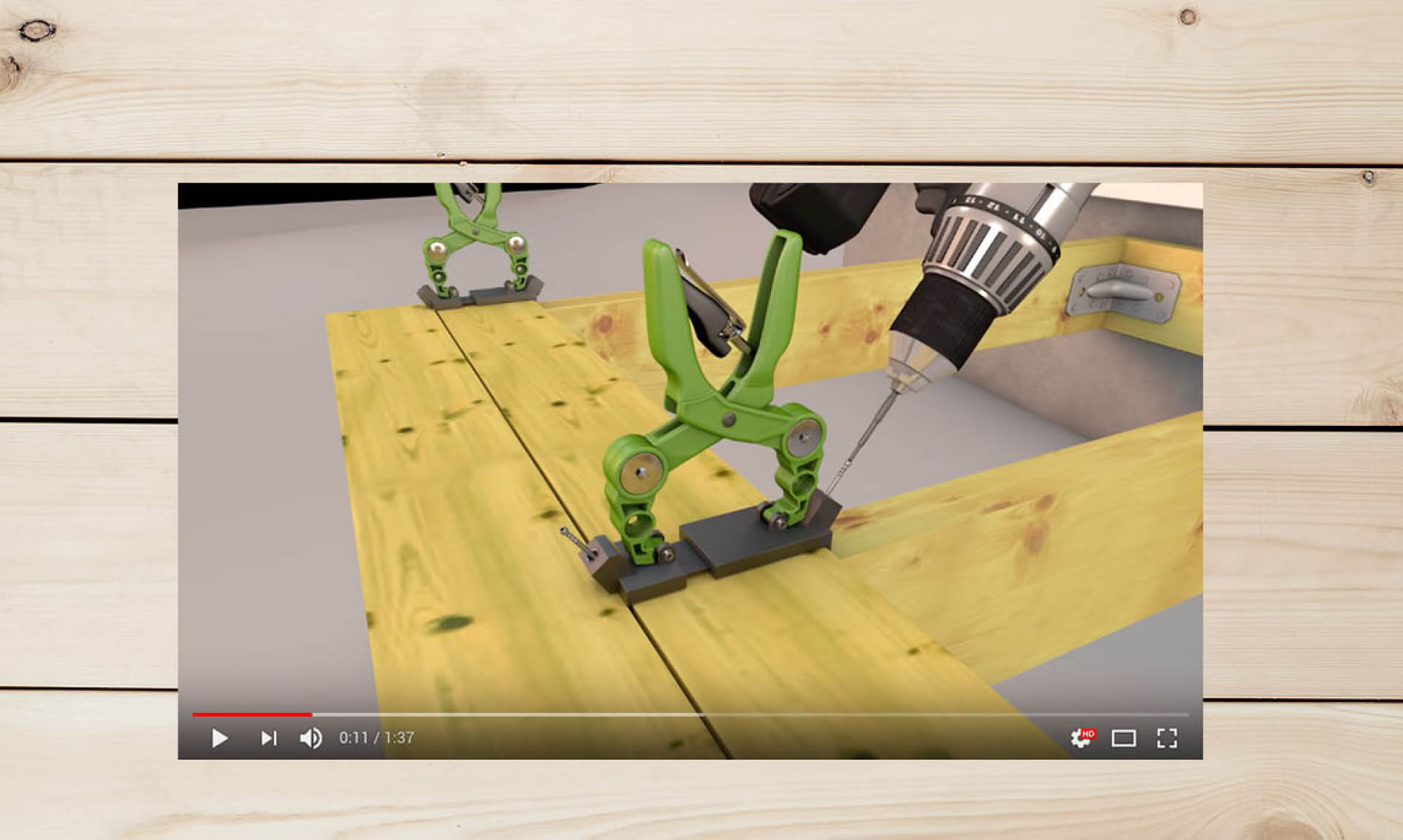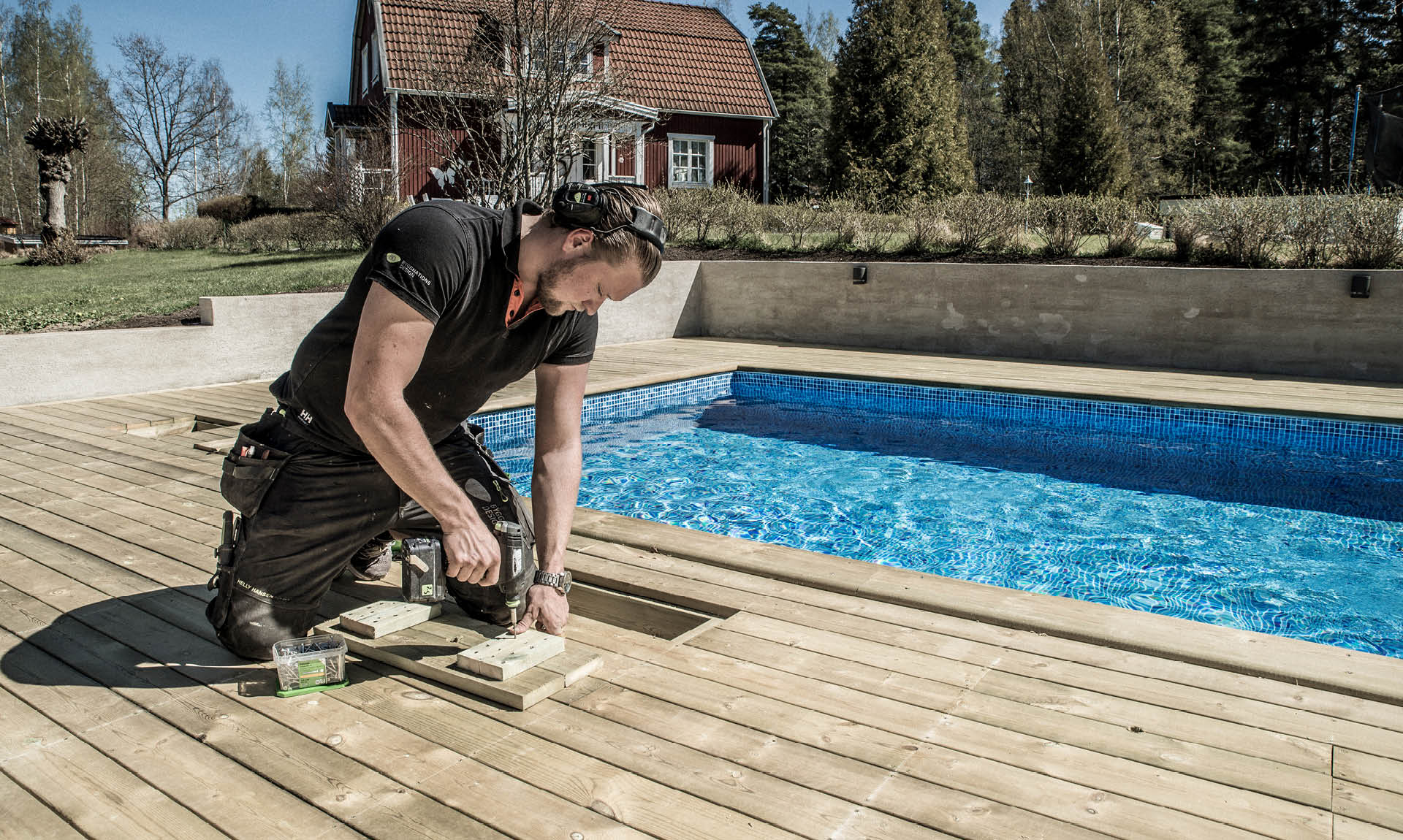
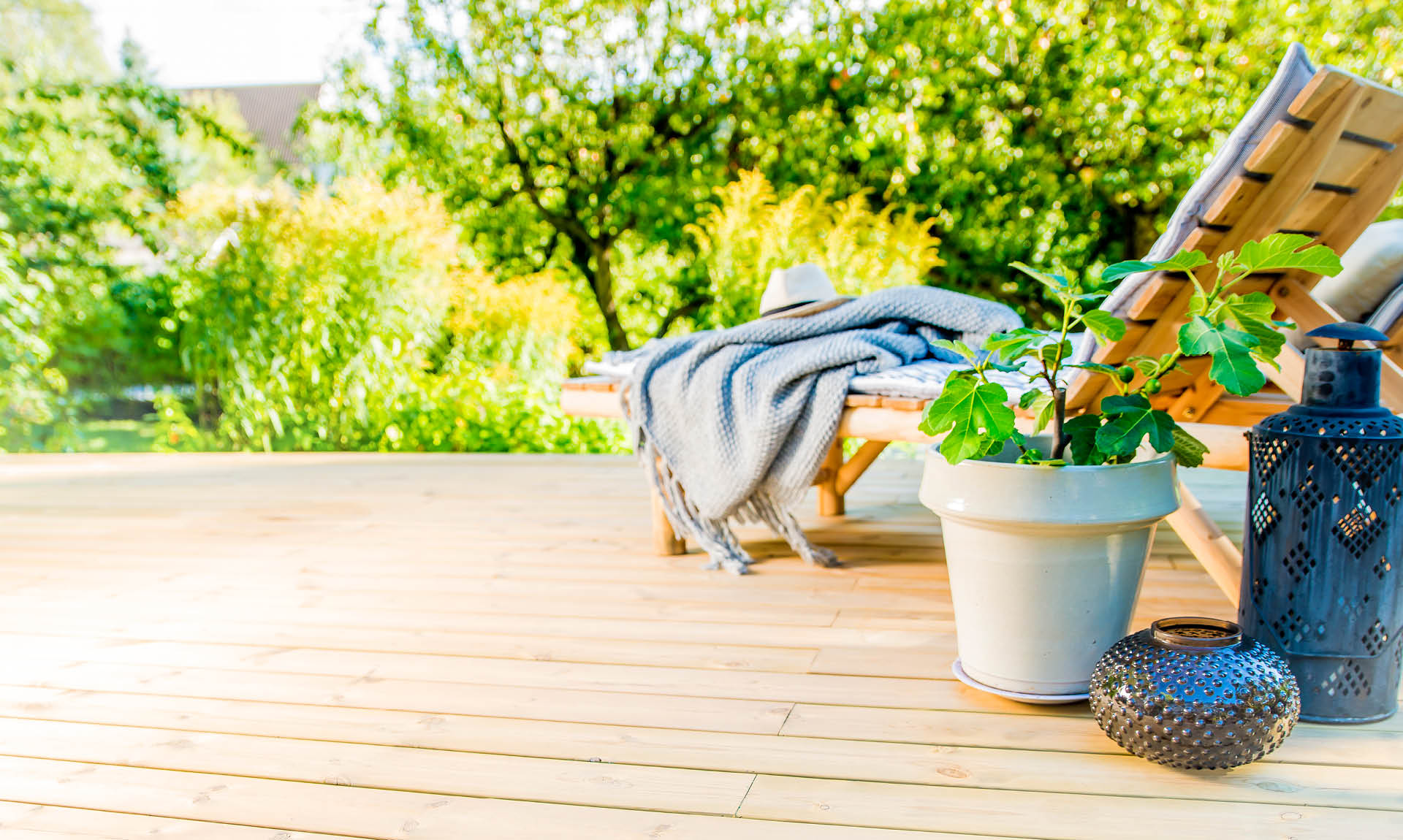
CHOOSE THE RIGHT SCREW
Wood type, environment and size determine the best option
To successfully build a wood deck, it is important that to choose the correct screw. The wood, the size of the deck and the environment drive the decision. On large decking projects, the screws are impacted by large forces. That is why we recommend a longer and more powerful screw that can handle the stress. Choosing stainless steel screws ensures that the screws will be just as strong 10, 20 and 30 years from now. In the instructional film below, you will see the assembly process step by step. In the professional guide, you will find all the details of wooden deck designs.

5 questions for building a durable wooden deck:
• WHAT are you going to build?
• WHERE are you going to build?
• HOW should it look?
• WHAT wood do you want to use?
• Are you going to build it by a POOL?
For an approved assembly, always follow the wood suppliers' requirements for distance between the boards.
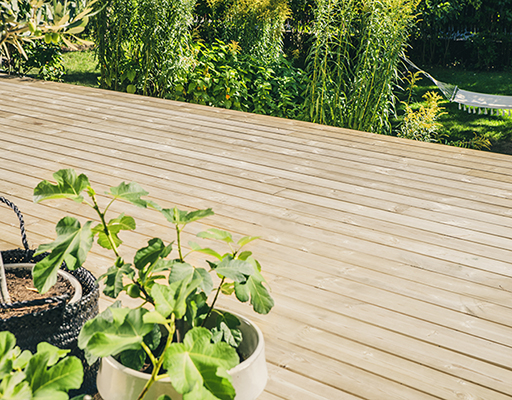
FASTENING CARRIER LINE
The material controls the attachment
INSTALLATION IN SOLID BRICK, HOLLOW BRICK AND HOLLOW BLOCK
To attach girders to brick facades that are load bearing is usually not a problem. If it's only a curtain wall, you need to know how much load it is built to handle. Mounting lower down is less risky. In some cases it may be better to attach the girder to the house’s structure.
INSTALLATION IN HOLLOW BRICK AND HOLLOW BLOCK
When installing in hollow stone, the facade plug must reach past the first cavity in the stone. This is to have a grip on at least two of the walls to ensure the strength.
ASSEMBLY IN LIGHT CONCRETE AND LIGHTWEIGHT AGGREGATE BLOCKS
Curved facades are usually made of lightweight aggregate blocks or light concrete. Try to get as deep as possible. You should preferably pass through the center of the stone.
INSTALLATION IN CONCRETE
Concrete is the most suitable material to attach the girder to. Remember that newer bases often consist of about 1 cm of concrete followed by 10 cm styrofoam before it becomes concrete again. Be sure to anchor the girder in the inner concrete layer.
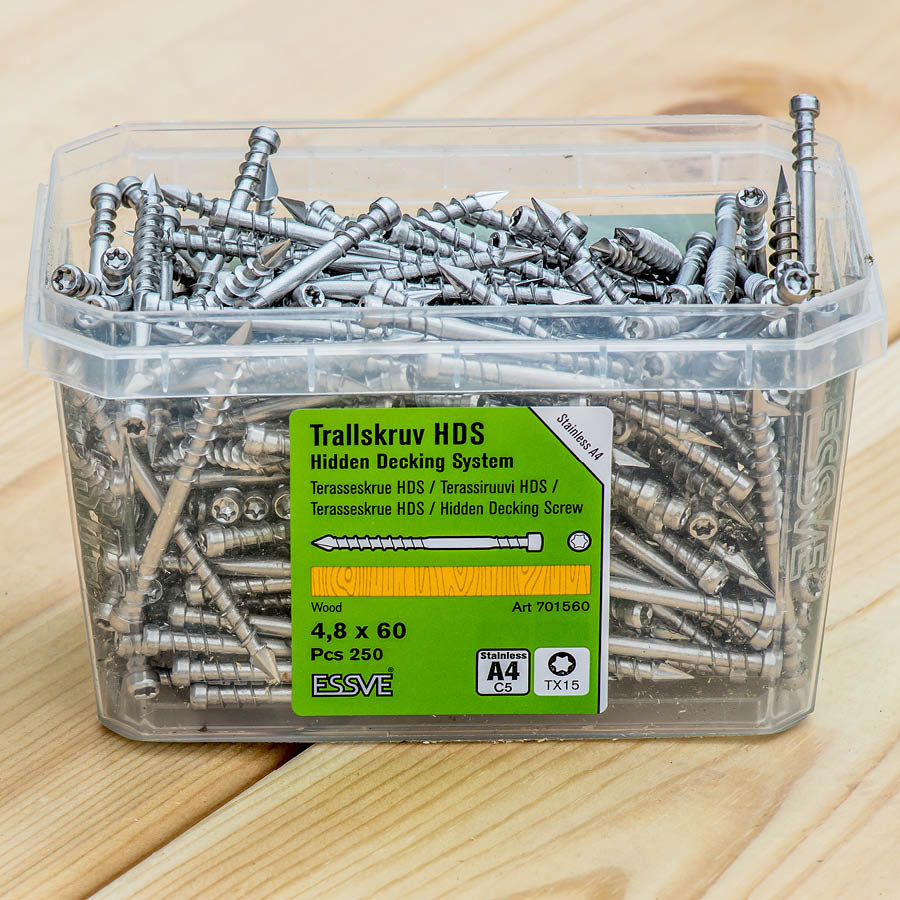
WOOD DIMENSIONS AND DISTANCES
For an approved assembly, always follow the wood suppliers' requirements for distance between the boards.
CORROSIVITY CLASS
• CORRSEAL
• Hardened carbon steel, corrosivity class C4
• Stable, low constructions
STAINLESS STEEL A2
• Unhardened steel, corrosivity class C4
• All types of constructions
• At lake / brackish water
• Rails, fences and stairs
ROSTFRI A4
• Unhardened steel, acid resistant, corrosivity class C5
• All types of constructions
• Pool deck and docks
• Coast of saltwater
• Selected wood types

AGGRESSIVE ENVIRONMENTS
The right choice of screws pays off!
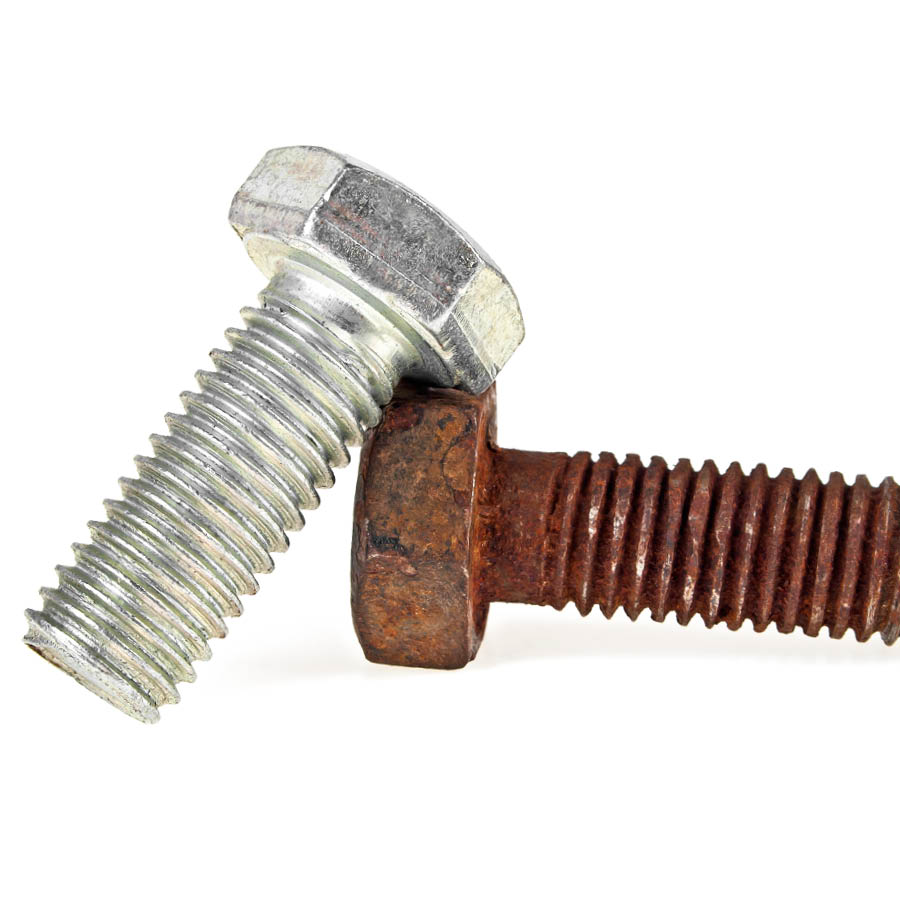
AVOID RED RUST
Select the correct screw characteristics
In order to avoid red rust in environments classified as aggressive, stainless steel deck screws are a must. Construction and choice of materials can also be crucial if the assembly requires stainless steel for maximum lifespan. Non-stainless-steel screws or screws that lack the correct surface treatment risk corrosion (rust), which in turn can lead to fractures in the steel. It is therefore important to choose the screw according to where, how to and with what you will build your wooden deck.
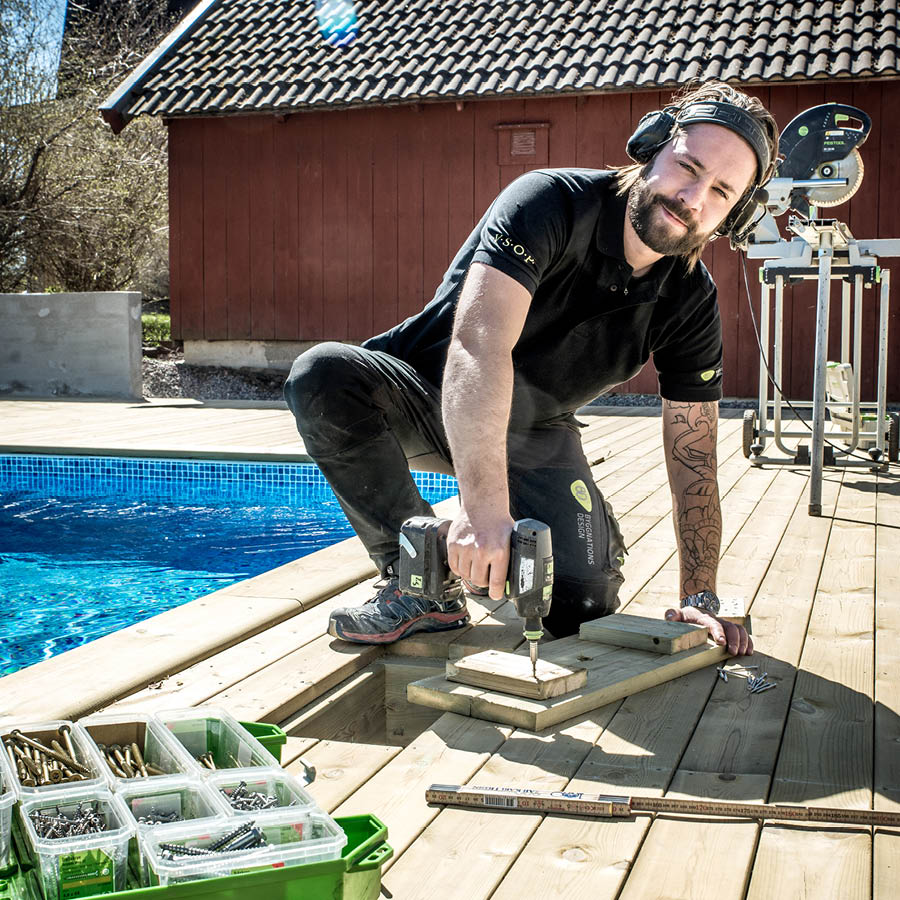
ENVIRONMENTS WHERE STAINLESS STEEL IS RECOMMENDED
• Coastal or near coastal locations, marine environments and docks. Since the wood deck in these environments is subjected to high levels of salt and moisture, which contributes to large movements in the structure.
• Pool decks because pool water is more aggressive than normal water and the environment is usually more moist.
• Decks close to entrances where thawing salt is used because the corrosive substances in the salt preparation penetrate the wood construction.
• Wooden decks that will be washed, since the cleaning agents accelerate the degradation process of the screw surface treatment.
• Large wooden decks, since the movements within the construction exert significant force.
• Rails and stairs because the construction moves when used.
• High above ground because the construction moves more than it would near the ground.
• Below ground level because the corrosion risk is much greater.
• Wooden decks made of exclusive woods such as teak, cumaru, organowood and Siberian larch, as these woods flex more.
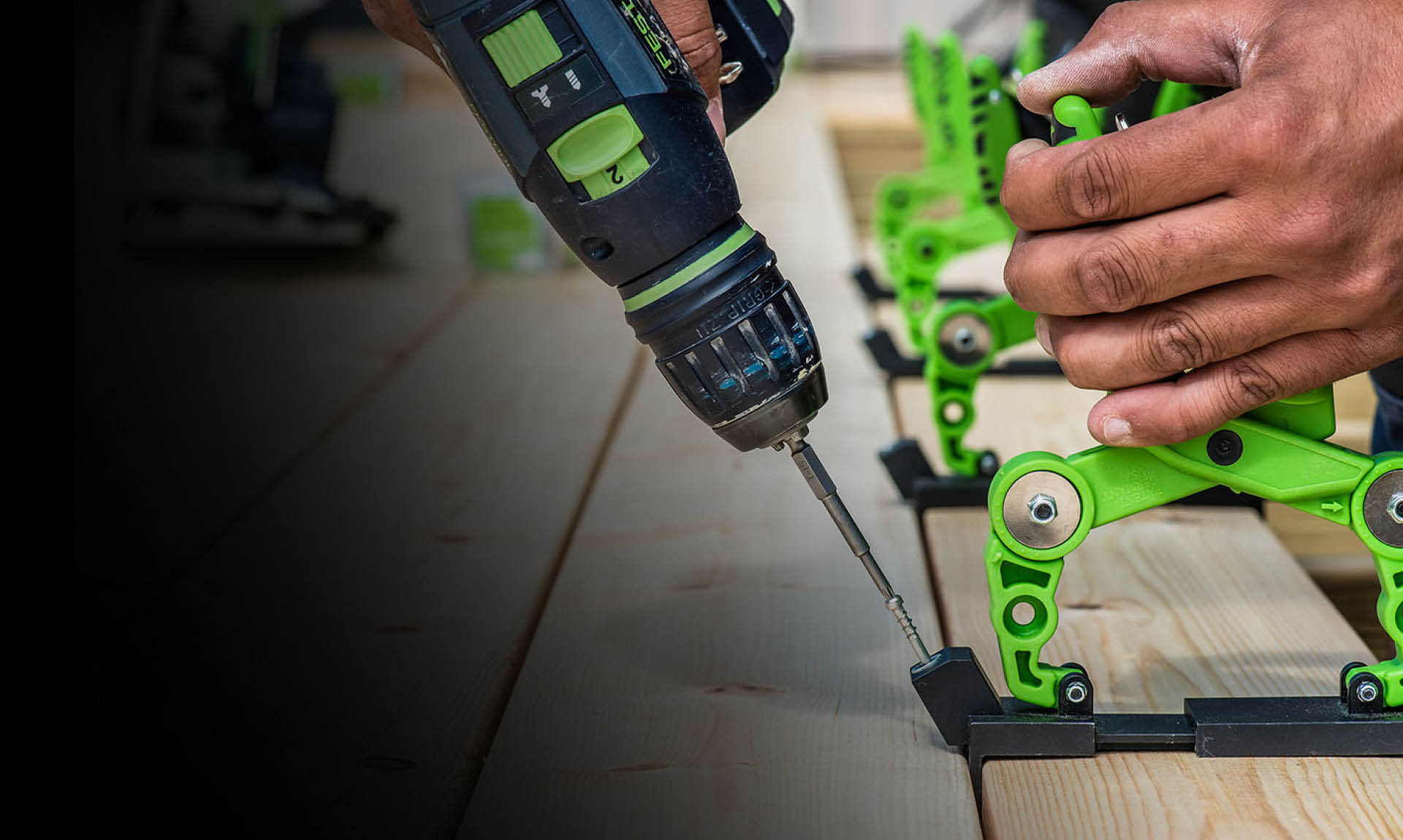
Hidden decking screw, HDS
HDS – COMPLETE SYSTEM
FOR HIDDEN DECK FASTENING
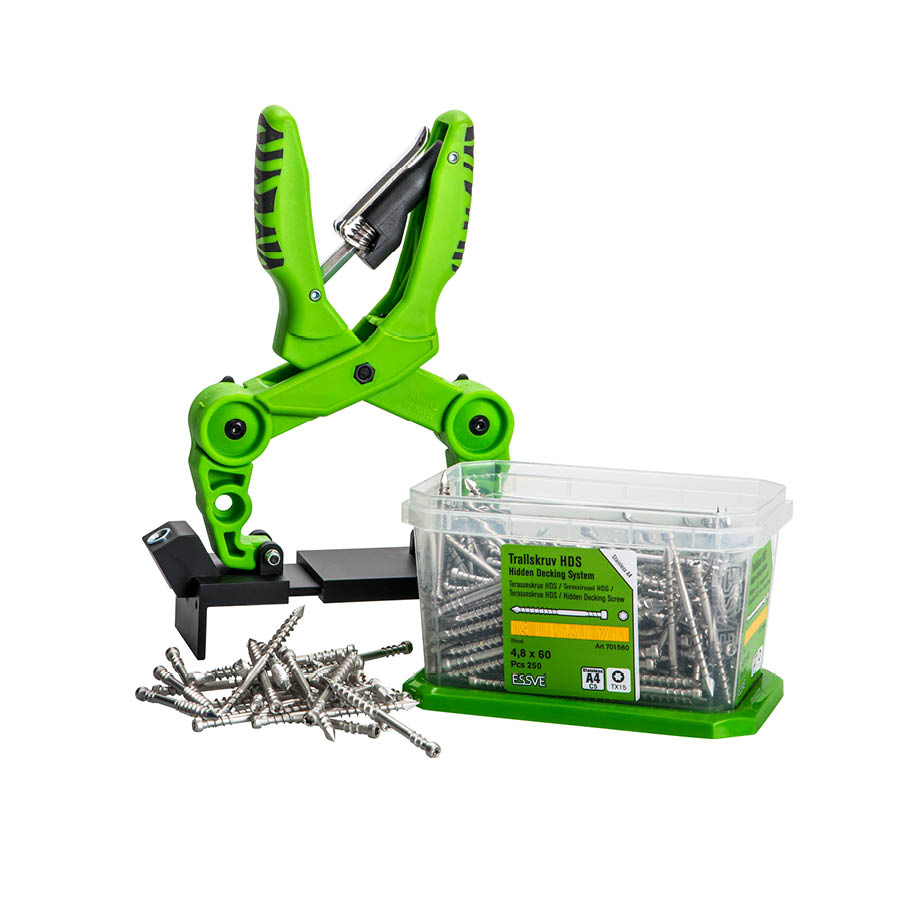
With our smart HDS – Hidden Decking System – specially designed deck screws are driven into the sides of the boards, resulting in a smoother wooden deck without visible screw heads.
• Complete system with mounting tools, bits and deck screws
• No cracks or splinters
• Rust-free screws allow you to have hidden fastening even in demanding environments
Easy to use:
1) Grip the plank with the mounting tool.
2) Place a screw into the hole on each end.
3) Angle the screwdriver so that the battery does not bump into the crossboard.
4) Drive the screws in with HDS bits. Always start with the outermost screw.
DECK SCREWS
Type and environment make the difference: the right choice of deck screw pays off






